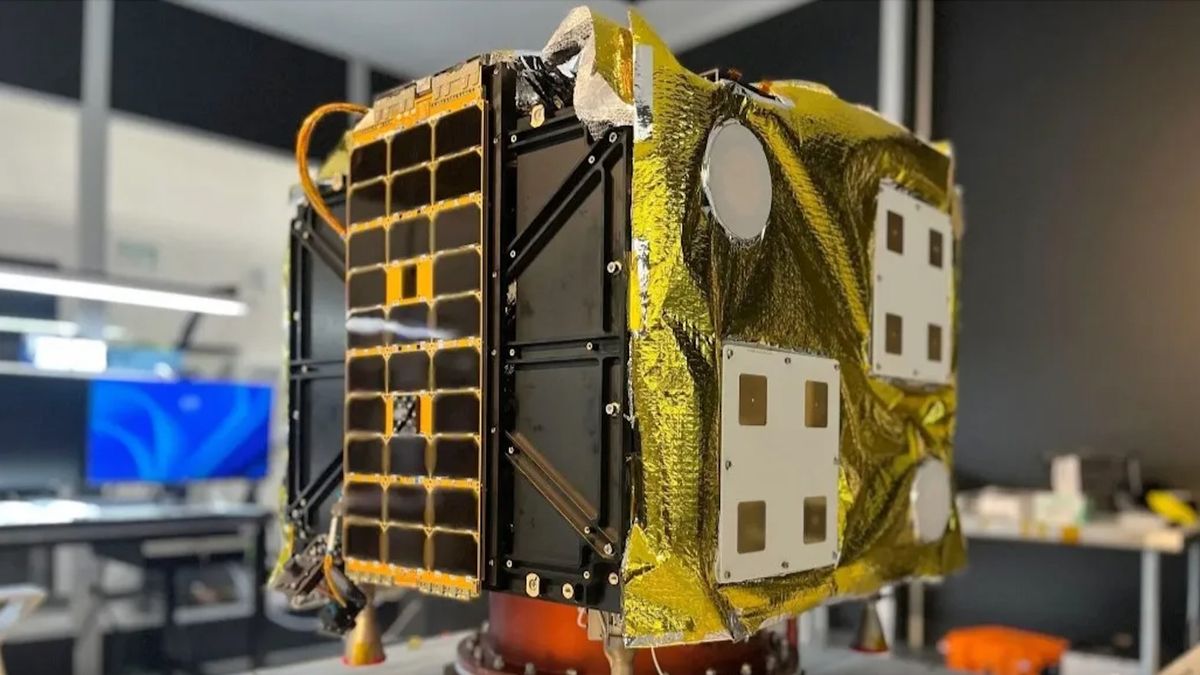
SpaceX has issued a caution regarding its retired Starlink satellites, indicating that they may not fully disintegrate when reentering Earth’s atmosphere. Some small debris from these satellites can survive and potentially land on the surface of our planet.
In a statement released on Thursday, SpaceX discussed its ongoing efforts to de-orbit and retire numerous older Starlink satellites by safely guiding them back into the Earth’s atmosphere, a process that typically incinerates the materials. Each Starlink satellite is engineered for an operational lifespan of around five years.
Previously, SpaceX claimed that its Starlink satellites were constructed to “completely dematerialize” during reentry, thereby presenting no risk to public safety. However, in its latest communication, the company acknowledged that tiny fragments from the incinerated debris could still fall back to Earth.
This Tweet is currently unavailable. It might be loading or has been removed.
Despite this, SpaceX reassures that the risk posed by satellite debris remains minimal. The likelihood of newer Starlink satellites causing harm to people has been assessed at “less than 1 in 100 million,” a figure that is considerably more cautious than existing industry norms.
It remains uncertain if older Starlink satellites launched around five years ago present a greater risk. Nonetheless, SpaceX claims to have implemented a “more conservative approach” than the current U.S. regulations, which stipulate that the risk of debris causing a human fatality must be below 1 in 10,000.
Although the latest V2 mini Starlink satellites are expected to combust entirely during reentry, SpaceX indicated, “we estimate that roughly 5% of the satellite’s total mass might survive the descent.”
“The primary component (~90% of the surviving mass) consists of silicon from the solar panels, which withstands high temperatures and has a low ballistic coefficient that allows it to survive reentry as tiny fragments,” the company clarified. However, any surviving silicon debris would touch down with less than one joule of energy—equivalent to the energy needed to lift an apple.

(SpaceX)
While the falling silicon material poses no threat, SpaceX pointed out that magnetic ceramic substances found in the “core of inductors and transformers” of a Starlink satellite might also withstand reentry. Therefore, the company is “restricting the size and mass of each inductor core, even at the expense of diminishing their efficiency and increasing design complexity.”
SpaceX’s careful stance on safety involves ensuring that any debris fragments return to Earth with less than 3 joules of energy—well below the U.S. regulatory limit, which considers any object with more than 15 joules a potential risk for human injury. “For context, 15 joules of energy is comparable to that of a 1.7” piece of hail,” the company detailed.
Recommended by Our Editors
In the same announcement, SpaceX noted that it plans to de-orbit 329 Starlink satellites, having already retired a total of 865. This aligns with observations made by astronomer and satellite tracker Jonathan McDowell, who has reported seeing SpaceX de-orbit approximately 4 to 5 satellites daily.
The growing frequency of satellite retirements may raise concerns about potential debris landing in populated regions. However, SpaceX maintains that it endeavors to de-orbit satellites “over the open ocean, away from populated areas and busy air and shipping routes.”
This was not the case in January, when a five-year-old Starlink satellite was observed streaking through the night sky over northern Illinois. Michael Nicolls, VP of Starlink Engineering, attributed the mishap to “degraded attitude control.” In the recent statement from SpaceX, it was clarified that maintaining satellite control at extremely low altitudes, below 125 kilometers, is necessary, which falls short of the design requirements for earlier Starlink models.
SpaceX has since enhanced the altitude control systems for its latest V2 and forthcoming V3 satellites. Additionally, the company has been conducting experimental tests to simulate atmospheric reentry conditions and assess whether the printed circuit boards used in the satellites disintegrate as expected. Currently, SpaceX operates over 7,000 satellites in orbit, with plans to launch thousands more.









